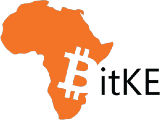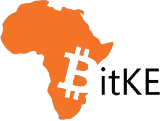The default rate on Kenya’s popular digital loans surged to as high as 40% in the year ending December 2024, according to a local daily analysis.
The Digital Financial Services Association of Kenya (DFSAK) estimates that it has lent KES 15 billion ($116.11 million) each month to over eight million Kenyans, totaling approximately KES 180 billion ($1.3 billion) in disbursements for the year 2024.
This suggests that between KES 54 billion ($418 million) and KES 72 billion ($557 million) of the total disbursements have been defaulted on. In comparison, defaults on commercial bank loans were 16.4% at the end of December 2024, slightly decreasing from 16.5% in October 2024 and 16.7% in September 2024.
The surge in defaults on both commercial bank and digital loans occurred against the backdrop of high interest rates throughout 2024, as the CBK raised its benchmark rate to combat rising costs and exchange rate pressures.
INFLATION | Kenya Inflation Drops to 3.6% in September 2024 – The Lowest in 12 Years
The Kenyan Shilling (KES) has made a remarkable recovery, going from being one of the world’s worst-performing currencies to the best-performing against the dollar this year [2024], according… pic.twitter.com/hK2mBIHLEl
— BitKE (@BitcoinKE) October 5, 2024
Elevated interest rates restricted access to credit for businesses and households while simultaneously driving up default rates as borrowers struggled to meet higher repayment obligations.
To mitigate the rise in non-performing loans (NPLs), commercial banks have set aside provisions for expected credit losses, alongside implementing measures such as debt write-offs and loan restructuring, and digital lenders are also taking a similar approach.
“This year [2025], we want to focus on the bad debts allowable to enable us to reasonably write off unpaid principal for tax purposes.
This conversation is well underway,” said DFSAK Chairman, Kevin Mutiso, in the industry’s annual report.
The digital lenders were a subject of debate in the 2022 Kenyan Presidential Election where the eventual winner, President William Ruto, attacked them for sending borrowers to lending blacklists. He would later launch the Hustler Fund in November 2022, a consumer-friendly lending platform.
[TECH] A World’s First? Kenya’s USSD-Powered Government ‘Hustler Fund’ Loan Program Kicks Off: Just 24 hours after it was launched, the Kenya government’s Hustler Fund sent over 413 million Ksh ($3.3.. https://t.co/je3ydlkjAi via @BitcoinKE
— Top Kenyan Blogs (@Blogs_Kenya) December 2, 2022
The Hustler Fund was also reportedly experiencing a higher default rate on repayments compared to competing products from commercial banks, SACCOs (Savings and Credit Cooperative Organizations), and microfinance banks.
[TECH] MOBILE MONEY | Kenya Government Sponsored Loan Product Has the Highest Default Rate Compared to Banking Alternatives: The Hustler Fund, a loan app introduced by Kenyan President, William Ruto, in Nove.. https://t.co/n2t5fX8DbY via @BitcoinKE
— Top Kenyan Blogs (@Blogs_Kenya) September 28, 2023
Meanwhile, the Central Bank of Kenya (CBK) took control of the digital lending sector after constant complaints from Kenyans about harmful practices, requiring all operating lenders in the country to apply for licenses. According to the bank, a Kenya government process gave the apex bank new powers which came into effect on December 23, 2021.
The Central Bank of Kenya
Officially Publishes Regulations to Protect Consumers from Digital Lendershttps://t.co/5mKyhSelqB @CBKKenya @dlak_ke
— BitKE (@BitcoinKE) March 22, 2022
The harmful practices by unregulated lenders included high costs, unethical debt collection methods, and misuse of personal data.
By October 2024, the CBK had approved licenses to 85 lenders. Meanwhile, the apex bank has received at least 730 applications since March 2022.
Follow us on X for the latest posts and updates
Join and interact with our Telegram community
__________________________________________
__________________________________________








